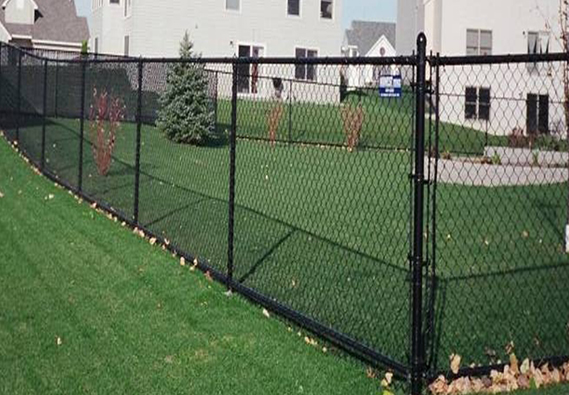What Is Vinyl Coated Chain Link Fencing?
In our previous discussion, we delved into the benefits of galvanized chain link fencing. Now, let’s shift our focus to vinyl-coated chain link fencing.
Vinyl-coated chain link fencing entails applying a layer of vinyl to a galvanized chain link fence. This vinyl coating acts as an additional barrier against the elements, further enhancing the fence’s longevity.
Types of Vinyl Coatings
There are two types of vinyl coatings: extruded and extruded and bonded. Extruded vinyl is less resilient and can be peeled off the galvanized steel wire, whereas extruded and bonded vinyl is more durable and resistant to peeling.
Homeowners often opt for vinyl-coated chain link fences primarily for their visual appeal. Available in various colors like black, green, and white, the vinyl can either blend the fence with its surroundings or lend a stylish touch to the property.
The vinyl coating extends to the fence’s posts, caps, and rails used during installation. This comprehensive coverage ensures the entire fence remains shielded from environmental elements, leading to a prolonged lifespan.
Advantages of vinyl-coated chain link fencing:
- Extended Lifespan: The vinyl coating safeguards the fence from rust and corrosion, potentially extending its life beyond 20 years.
- Enhanced Appearance: With a range of colors to choose from, the vinyl coating allows you to select one that complements your property’s aesthetics.
- Low Maintenance: Vinyl coating requires minimal upkeep, alleviating the need for regular painting or staining.
- Durability: The vinyl coating stands up to challenging weather conditions, contributing to its robustness.
If you’re seeking a durable, low-maintenance fence that boasts an appealing look, vinyl-coated chain link fencing could be an excellent choice.

